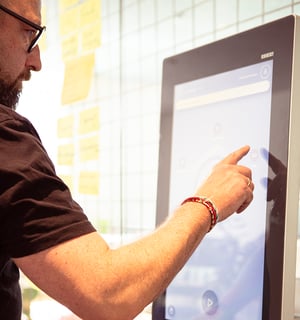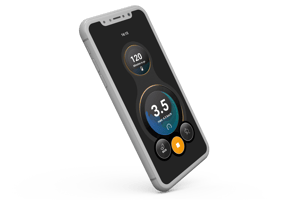
Multifrontend
The machine operation should adapt to the conditions, not the other way around.
What is Multifrontend

Why multifrontend for the mechanical engineering industry
Thinking in Use Cases
Different access points are needed depending on the requirement in the process. A smartphone is ideal for notifications, while a tablet provides analysis and an overview.
Branch specifics
Specific production processes partially dictate the possibilities for technology use. We assist in selecting the right technology to meet these needs.
User-centered
Frontend and technology are adapted to each role based on the UX concept.
Security
Security requirements are considered at all times, with information and especially actions carefully selected to ensure targeted access.
Web
The Alphagate software platform supports multiple frontend technologies. Data is collected through the A-Hub and sent to the respective frontends via interfaces. This results in a single data source powering multiple frontends, ensuring seamless integration and versatility across various user interfaces.
Java
The Java frontend is created with the A-Vis Editor based on no-code and low-code principles, offering quick installation via drag-and-drop functionality. Known for its high stability in various environments, it runs on both Windows and Linux. Central software updates are simplified through a server-client structure, where updates are made on the server and automatically distributed, reducing maintenance effort.

Apps
Mobile apps offer significant advantages in machine operation by providing flexible and location-independent control options. Following the principles of the Human Centered Design Process, the technology is specifically applied using the Responsense® principle to ensure user-friendly and efficient interaction. This approach optimizes the user experience and enhances operational efficiency in industrial environments.